
Read our 2023 annual report

Knowledge Hub
El Niño drives crisis in south and east Africa
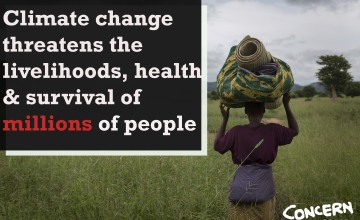
Climate change threatens the livelihoods, health and survival of millions of people. We look at challenges posed by El Niño in southern and eastern Africa and what is being done to prevent a humanitarian disaster.
Increasingly erratic weather patterns, exacerbated by climate change, wreak havoc in the lives in millions of people across the globe. However, it is the people who are doing least to cause climate change who are suffering the most. Most recently, nations in eastern and southern Africa have been hit by the worst drought in the region in decades – and the situation has reached crisis point this April.
Changing weather patterns
The increasingly unpredictable weather patterns seen in southern and eastern Africa are exacerbated by the El Niño weather event. Failed rains in some areas and increased rainfall in other areas are resulting in droughts, floods and harvest failures. This is having significant impacts on nutrition, livelihoods and survival of millions of people.
The effects of El Niño and climate change
Panic and fear is spreading across east Africa as harvests and livestock are being devastated by drought. Ethiopia is facing the worst drought in 50 years; Malawi is currently in a state of national disaster due to the country’s worst crop failure in a generation; and the government of Mozambique has declared a red alert as severe drought threatens the lives of millions.
While it’s hard to predict exactly how this El Niño will play out, we must focus on what can be done to prevent further suffering and an escalation of this crisis. And as the impact of this El Niño is expected to last until the next harvest in 2017, we must ensure that we build community resilience and prepare communities for future climate related risks. Our teams are on the ground in Malawi, Mozambique, Ethiopia, Somalia and other El Niño-affected countries in east Africa.
Worst drought in 50 years in Ethiopia
Ethiopia is in the grips of its worst drought in 50 years because of poor rainy seasons, heightened by the effects of El Niño. Crop failure and a lack of rainfall are having a direct impact on 80 percent of the population who depend on agriculture for their food and income.
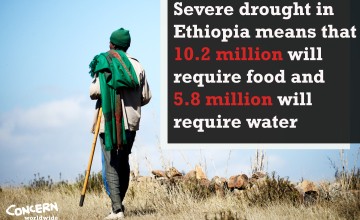
Currently 10.2 million people are in urgent need of food aid and 2.2 million cases of moderate acute malnutrition are predicted. It is estimated 5.8 million people require emergency water supplies. The children of Ethiopia are bearing the cost of the crisis too, as schools are closing down and children are missing days of school every week to help their families fetch water.
National disaster in Malawi
On 13 April, the President of Malawi declared a state of national disaster because of drought and failed harvests. It’s predicted that up to 4 million people will be in need of assistance in Malawi over the next twelve months, a sharp increase from the 2.8 million that faced hunger and food insecurity caused by flooding and drought last year.
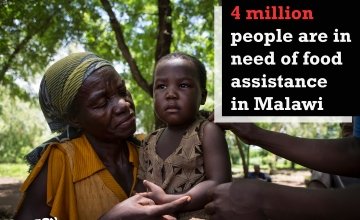
The severe drought has led to the worst crop failure Malawi has seen in a generation. Maize accounts for 95% of the all crops harvest in Malawi and there has been 40% fall in the yield of maize in last five years. This means that increasing numbers of households are faced with acute food insecurity. Already, almost half the children in Malawi are stunted due to malnutrition, one of the highest rates in the world.
Red alert in Mozambique
Neighbouring Mozambique is also in the throes of climate-rated disaster. The lives of 1.5 million people are threatened with hunger due to severe drought and the government has declared a state of “red alert”.
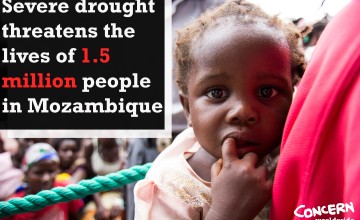
Poor rainfall has led to widespread crop failure and the results of this coming harvest are predicted to be poor, with less than 10% of households expecting successful yield. With failed harvest, staple food prices are continuing to rise, limiting access to food and leading to acute food insecurity. The number of children dropping out of school is increasing all the time as families struggle to provide adequate nutrition for their children.
Recurring disasters in Somalia
Several seasons of failed rains, exacerbated by the El Niño phenomenon, has led to severe drought in Somalia. The situation has reached emergency levels in the north of the country and in March 2016 the Government of Somaliland declared a state of emergency.
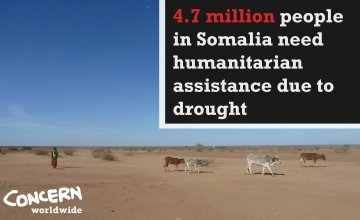
Food security issues are a concern throughout the country, however prolonged dryness in Somaliland has resulted in deaths of livestock, extinguished water sources and the absence of milk, sparking fears of potential crisis.
Concern’s response to El Niño impacts
Concern is working on the ground in Malawi, Mozambique, Ethiopia, Somalia and many other eastern and southern African countries to help communities cope with climate-related challenges. In Malawi and Ethiopia, we are distributing drought-resistant seeds and implementing an emergency nutrition response. In Mozambique we are working with communities on preparedness plans in case of further weather-induced disasters. And in Somalia we are providing alternative water sources and unconditional cash transfers to affected communities.
More help needed
The effects of the current El Niño event are felt throughout eastern and southern Africa and this crisis is far worse than anything seen in recent years. Millions are at risk of starvation and the numbers are set to increase if we don’t act fast. The international community needs to work together to combat this food crisis and to prevent all-out emergency.
Want to learn more?
Help now
Help families affected by El Niño now by donating to our appeal.


